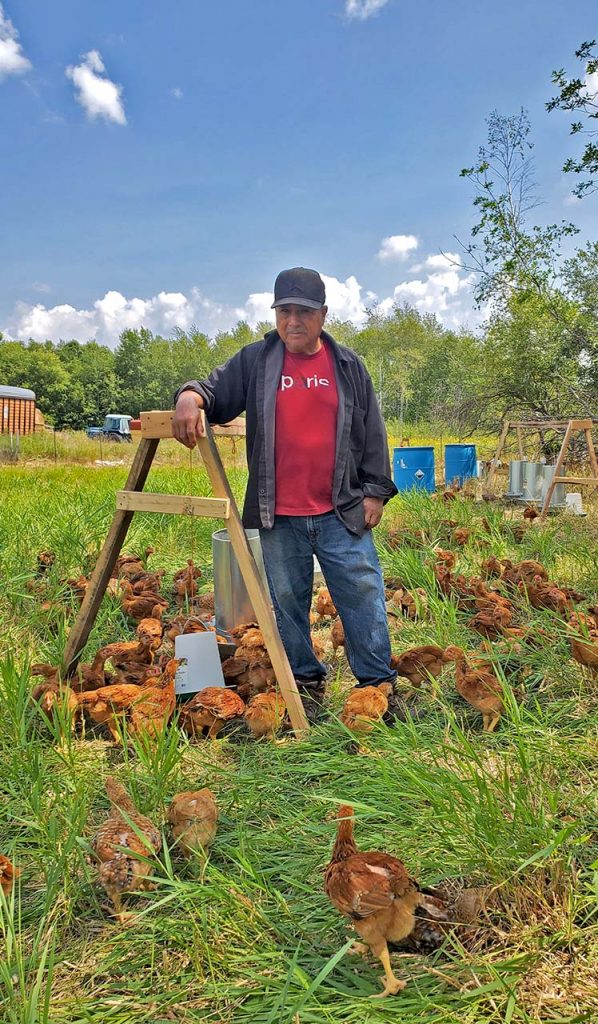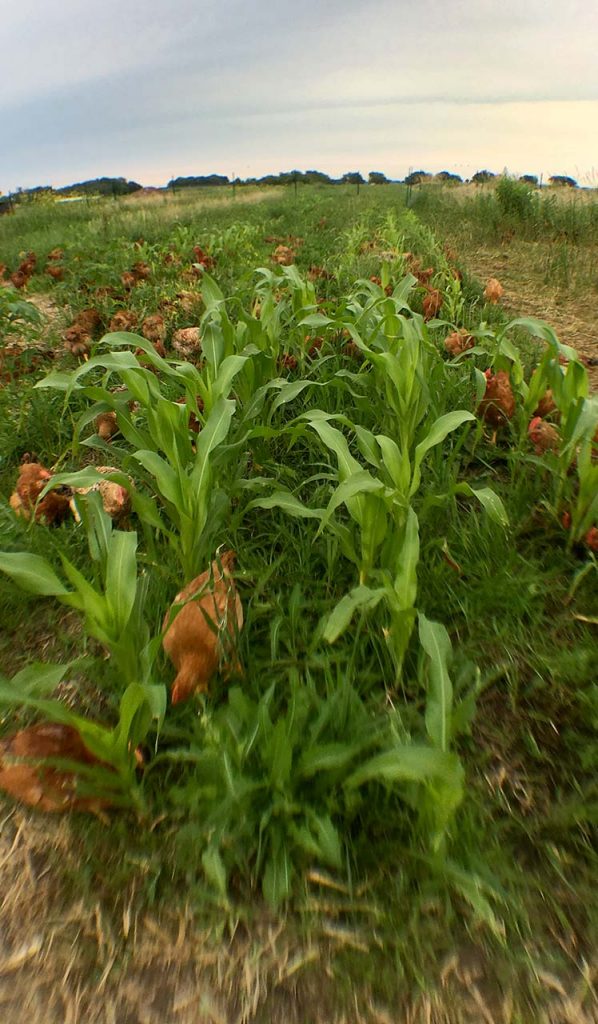
The regenerative poultry ecosystem bases its assumptions on the regenerative poultry-centered production system, a unitized farm enterprise model that integrates:
One regenerative poultry production unit occupies 1.5 acres and consists of one coop and two fenced-in paddocks planted with trees and woody perennials, which protect the birds from aerial predators and extreme weather.


The chickens roost in the coop and alternate grazing between the two paddocks. When one paddock has been cleared of its available forage, the farmer lets the chickens in the second paddock while the other regenerates.


The regenerative poultry-centered ecosystem allows farmers to choose what tracks to pursue while providing the platform through which to aggregate and organize.
For example, farmers who only want to grow cash crops can participate by:
In terms of physical infrastructure, farmers might choose to outfit an existing building or build the coop from the ground up.
Strategically planting the paddocks with native tree species, hazelnuts, and elderberries is encouraged, but not required. Farmers often make paddocks with existing stands of trees, or plant tall annuals like corn and sunflowers to provide the necessary cover while the perennial plantings develop.

A regenerative agriculture industry alliance for thriving businesses, people and planet.